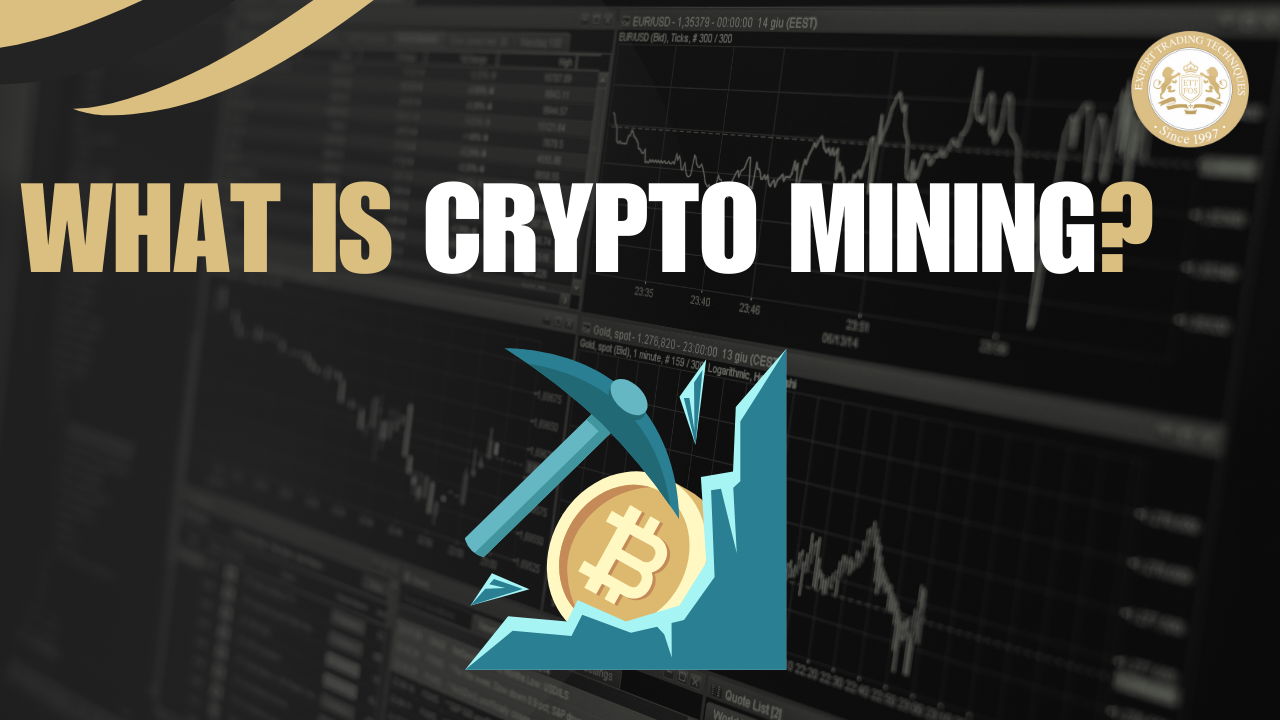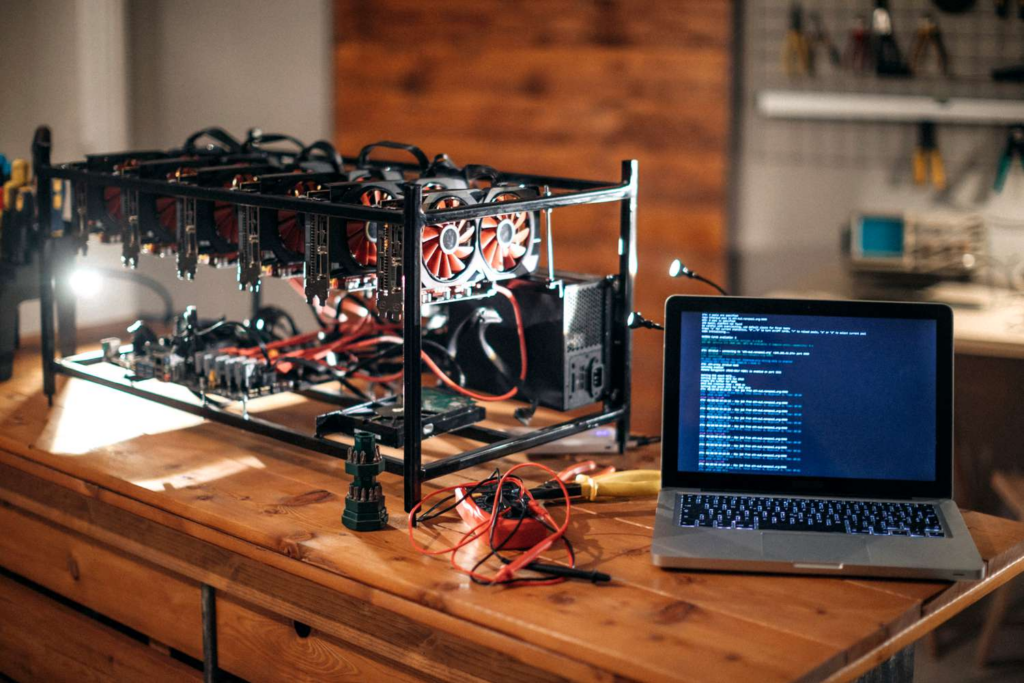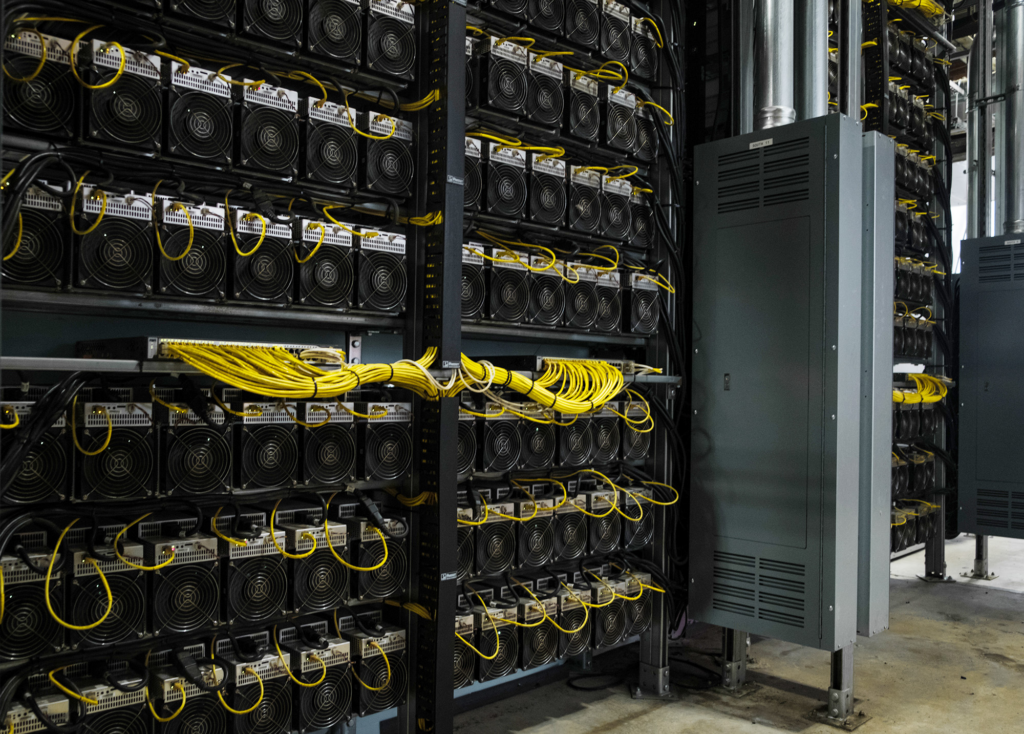
If you’ve ever wondered how cryptocurrencies like Bitcoin are created and how transactions are verified, you’re not alone. Crypto mining is the key process behind this fascinating digital world. At its core, mining is about solving complex puzzles to secure and maintain the blockchain which is the backbone of most cryptocurrencies. It’s like a high-tech treasure hunt where miners use powerful computers to compete for rewards.
To solve all your queries related to crypto mining, I have curated this article in which I’ll break down what crypto mining really means, how it works, and why it’s so important. So, let’s get started and unravel the mystery of crypto mining together!
Also Read: Crypto Mining Vs Crypto Trading

Crypto mining might sound like a high-tech way to make money, but at its heart, it’s about keeping a digital ledger honest and secure. Imagine you’re in a giant, global game where everyone is trying to keep track of who has what. To play fairly, everyone needs to make sure that the rules are followed, and no one tries to cheat.
Here’s where mining comes in. When someone spends cryptocurrency, it’s like writing a note in a shared notebook that everyone can see. Miners use powerful computers to solve tough puzzles, which helps confirm that this note is correct and hasn’t been duplicated. This process adds the transaction to the digital ledger, or blockchain, making sure everything is accurate and fair. So, in simple terms crypto mining is about validating transactions, preventing fraud, and keeping the whole system running smoothly.
Also Read: Common Mistakes In Intraday Crypto Trading
In the world of cryptocurrencies, miners are like the diligent bookkeepers of a vast, digital ledger. Their job is crucial for keeping everything running smoothly and fairly. Let’s understand what they do.
Also Read: Swing Trading in Crypto

Think of crypto mining like a high-stakes digital puzzle game. Here’s a simple breakdown of how it works. Imagine miners as diligent record-keepers who gather a bunch of transaction requests. These are like receipts that need to be verified.
To add these transactions to the blockchain, miners need to solve a tricky mathematical puzzle. This puzzle is designed to be hard to crack but easy to verify once solved. It’s a bit like a sudoku puzzle, but on a much more complex level.
Once a miner solves the puzzle, they create a new block of transactions. This block is then added to the blockchain, which is a chain of blocks, like a ledger where every page is linked to the one before it. This keeps the whole system secure and in order. For solving the puzzle and adding the block, miners are rewarded with newly minted cryptocurrency. This reward is their incentive for spending time and resources on mining.
Most cryptocurrencies use a system called Proof-of-Work (PoW). This means that miners must prove they’ve done the work (solved the puzzle) before they can add their block. It’s what keeps the network secure and prevents cheating.
Also Read: How Reliable is AI for Crypto Trading
Let’s break down a typical crypto mining puzzle with a straightforward example. Suppose, the blockchain requires a puzzle where the solution is a number that, when used with the block’s data, creates a hash that starts with a specific number of zeros.
Suppose the block contains the following data: “Transactions A, B, and C.” The blockchain network demands that the hash of this block’s data, combined with a nonce, starts with three zeros. In other words, you need a hash like 000abcf123.... Let me clarify that the hash is generated using the block’s data and a random number called a “nonce.” The goal is to find a nonce that makes the hash start with a specific number of zeros.
You start with a nonce of 1 and combine it with the block data: Transactions A, B, and C + nonce 1. You then hash this combined data to get a hash value. Let’s say it’s a1b2c3....This doesn’t start with three zeros, so you try a new nonce. Next, you try nonce 2, and combine it with the block data: Transactions A, B, and C + nonce 2. Hash this, and if the result is 000xyz..., you’ve found the correct nonce! If nonce 2 produces a hash like 000xyz..., where xyz can be any sequence of characters, this nonce solves the puzzle.
In conclusion, the miner’s job is to find a nonce that, when combined with the block’s data, produces a hash meeting this requirement. It’s a trial-and-error process with millions of possible nonces.
Also Read: How to Avoid FOMO During Crypto Trading

Starting with crypto mining might sound complex, but it can be broken down into simple steps. Here’s a simple guide to get you going:
Decide which cryptocurrency you want to mine. Bitcoin is the most famous, but there are many others like Ethereum, Litecoin, or newer options. Each has its own mining requirements and rewards.
Mining needs powerful equipment. You can choose between ASICs (Application-Specific Integrated Circuits) for efficiency, or GPUs (Graphics Processing Units) for flexibility. ASICs are great for specific coins like Bitcoin, while GPUs can handle a variety of cryptocurrencies.
Next, you’ll need software to connect your hardware to the blockchain network. Popular options include CGMiner, BFGMiner, and NiceHash. This software helps your machine solve those complex puzzles we talked about earlier.
Mining on your own can be tough due to the high competition. Joining a mining pool means you work with others to mine more effectively and share the rewards. Pools like Slush Pool or F2Pool can help you get started.
To receive your earnings, you need a digital wallet where your mined cryptocurrency will be stored. There are various types, including software wallets, hardware wallets, and online wallets.
With your hardware, software, and wallet all set up, you can start mining. Your mining software will connect to the network, and your hardware will begin solving puzzles to validate transactions.
Keep an eye on your mining operation to ensure everything runs smoothly. Check your hardware’s performance, watch your energy usage, and make sure your software is up to date.
Also Read: How to Detect and Recover from Crypto Trading Scams

When diving into crypto mining, you’ll come across several methods, each with its own approach and benefits. I am giving you a quick guide to the main types:
It is when you tackle the mining process all by yourself. You use your own hardware to solve complex puzzles and validate transactions on the blockchain. If you succeed, you get to keep all the rewards from mining a new block. However, solo mining can be challenging due to high competition and requires substantial computational power. It’s also risky, as the chances of successfully mining a block on your own are relatively low, which means you might spend a lot on electricity and hardware without seeing much return.
Pool mining involves joining a group of miners who combine their computing power to tackle mining tasks more effectively. When the pool successfully mines a block, the rewards are distributed among all members based on their contribution. This method offers more consistent payouts compared to solo mining, reducing the financial risk and increasing the likelihood of earning rewards. However, you’ll need to share your earnings with other pool members and pay a small fee to the pool operator.
Cloud mining allows you to rent mining power from a service provider, eliminating the need for you to purchase or maintain mining hardware. You simply pay for a certain amount of hashing power, and the provider handles the technical side of mining. This approach is convenient and requires less technical know-how, but it can be less profitable and comes with risks, such as potential scams or lower returns compared to owning your own equipment. Trust in the cloud mining service is crucial.
This type of mining involves using specialized equipment like ASICs or GPUs to mine cryptocurrencies. ASICs are highly efficient and designed for specific cryptocurrencies, making them powerful but expensive. GPUs, while versatile and capable of mining various coins, are generally less efficient for high-difficulty tasks. This method requires a significant initial investment and ongoing costs for electricity and cooling, but it can be more profitable if managed well.
It refers to a combination of different mining techniques or consensus mechanisms used by some newer cryptocurrencies. By blending methods, these systems aim to enhance security and efficiency. For instance, a coin might use both Proof-of-Work (PoW) and Proof-of-Stake (PoS) to achieve a balance of security and energy efficiency. Hybrid mining can offer the benefits of multiple approaches, but it can also introduce added complexity and make it more challenging for beginners to get started.
Also Read: Why Should Youngsters Learn Crypto Trading

When it comes to mining cryptocurrencies, there isn’t just one way to do it. Different cryptocurrencies use various methods to handle mining and transaction validation, each with its own set of rules and benefits. Understanding these different types can help you choose the right approach for your needs and goals. Here are some of the most common types of cryptocurrency mining:
Proof-of-Work is like the gold standard of mining. It’s the method used by Bitcoin and several other cryptocurrencies. In PoW, miners compete to solve complex mathematical puzzles. The first one to crack the puzzle gets to add the new block to the blockchain and earns some cryptocurrency as a reward. It’s secure and well-established but requires significant computational power and energy.
Proof-of-Stake takes a different approach. Instead of solving puzzles, PoS lets you create new blocks and validate transactions based on how many coins you hold. The more coins you “stake” or lock up as collateral, the higher your chances of being chosen to add a new block. It’s more energy-efficient than PoW and encourages long-term holding of the cryptocurrency.
Proof-of-Authority is a bit like a VIP club. In PoA, only pre-approved nodes or validators are allowed to create new blocks. These validators are trusted entities known for their reliability. PoA is fast and efficient, making it great for private or enterprise blockchains, but it relies on a trusted set of validators rather than a decentralized approach.
Some newer cryptocurrencies mix PoW and PoS to get the best of both worlds. For example, they might use PoW to initially secure the network and PoS for ongoing block creation and validation. This hybrid method can offer a balance between security and energy efficiency.
Delegated Proof-of-Stake is like electing representatives. In DPoS, coin holders vote for a small number of delegates who then handle the task of validating transactions and creating new blocks. This system speeds up the process and reduces energy usage, making it more scalable, but it relies on a smaller group of trusted delegates.
Also Read: Explore Stock vs Forex vs Crypto
Crypto mining is a fascinating but complex world. It has its perks and pitfalls, which can make it a bit of a mixed bag. I have created a table with detailed look at the benefits and drawbacks of getting into crypto mining.
| Benefits | Drawbacks |
|---|---|
| Potential for Profit | High Energy Consumption |
| Mining can be profitable if you have the right setup and choose the right cryptocurrency. Successful miners can earn rewards in the form of newly minted coins or transaction fees. | Mining operations require a lot of electricity, which can lead to high energy bills and environmental concerns. The power needed for large-scale mining operations can be quite substantial. |
| Contributes to Network Security | Hardware Costs |
| Miners play a crucial role in maintaining the security and integrity of the blockchain. By solving complex puzzles and validating transactions, they help protect the network from attacks and fraud. | The initial investment in mining hardware can be significant. ASICs and high-end GPUs can be expensive, and keeping your equipment up-to-date adds to the costs. |
| Decentralization and Freedom | Mining Difficulty and Competition |
| Mining helps to keep the cryptocurrency network decentralized and free from central control. This decentralization is key to the security and independence of the currency. | As more people get involved in mining, the difficulty of solving puzzles increases. This heightened competition can reduce the chances of earning rewards and may require more powerful hardware to stay competitive. |
| Learning Experience | Maintenance and Technical Issues |
| Engaging in mining provides valuable insights into how cryptocurrencies work. It’s a great way to learn about blockchain technology, cryptographic processes, and network operations. | Mining operations require ongoing maintenance and can experience technical issues. Keeping your hardware running smoothly and troubleshooting problems can be time-consuming and require technical knowledge. |
Also Read: What Is Gold ETF
Looking ahead, the world of crypto mining is set to evolve in some exciting and significant ways. Here’s a snapshot of what we might expect.
As concerns about the environmental impact of mining grow, there’s a strong push towards making mining operations more energy-efficient. Innovations like more efficient hardware and greener energy sources are on the horizon. We might see mining shift to renewable energy sources like solar or wind power, reducing its carbon footprint and making it more sustainable.
Proof-of-Work (PoW), while effective, is energy-intensive. Many new cryptocurrencies are adopting alternative consensus mechanisms like Proof-of-Stake (PoS) or hybrid models that use less power and are more eco-friendly. These alternatives promise to keep networks secure while cutting down on energy usage.
As crypto mining becomes more mainstream, it’s likely to face more regulatory scrutiny. Governments around the world are beginning to take a closer look at mining activities, especially concerning their environmental impact and financial practices. This could lead to stricter regulations and compliance requirements for miners.
Advancements in technology will continue to shape the future of mining. From more powerful and efficient mining hardware to improved software and cooling solutions, these innovations will help miners stay competitive and possibly lower costs.
Also Read: What Is Energy Trading
So, till now we’ve explored the world of crypto mining, breaking down what it is, how it works, and its various types. We’ve seen that mining is not just about creating new coins but also about securing and validating transactions on the blockchain. From Proof-of-Work to Proof-of-Stake, different methods offer unique advantages and challenges.
Mining has its perks, like potential profits and contributing to network security, but it also comes with drawbacks such as high energy consumption and significant hardware costs. Looking ahead, we can expect advancements in energy efficiency, shifts to alternative consensus mechanisms, and increased regulation.
If you’re intrigued by the possibilities of crypto mining, consider diving deeper into resources that can guide you further. For those eager to learn more and get hands-on experience, ETTFOS.COM offers valuable courses and insights to help you navigate the exciting world of cryptocurrency mining.
Mining and staking are two ways to validate transactions and secure blockchain networks. Mining, typically used in Proof-of-Work systems like Bitcoin, involves solving complex mathematical problems with powerful hardware. Staking, used in Proof-of-Stake systems, involves holding and locking up a certain amount of cryptocurrency as collateral to validate transactions and create new blocks.
Starting cryptocurrency mining can be costly. Initial expenses include purchasing hardware like ASICs or GPUs, setting up cooling systems, and paying for electricity. Costs can range from a few hundred to several thousand dollars, depending on the scale and type of mining you choose. Additionally, ongoing electricity and maintenance costs should be considered.
Profitability in crypto mining depends on various factors such as hardware efficiency, electricity costs, and cryptocurrency market value. While some miners earn significant rewards, others may struggle to cover their expenses, especially if competition increases or cryptocurrency prices fall. Carefully assessing these factors and regularly monitoring market conditions is crucial for determining profitability.
Crypto mining, particularly with Proof-of-Work systems, consumes a lot of electricity, leading to high energy use and environmental concerns. The energy-intensive nature of mining contributes to increased carbon emissions if the power comes from non-renewable sources. As awareness grows, there’s a push towards greener mining practices and alternative consensus mechanisms to reduce environmental impact.